
Deutsch-Chinesische Enzyklopädie, 德汉百科
 International cities
International cities

 Beijing Shi-BJ
Beijing Shi-BJ
 China
China
 Chinese Super League 2019
Chinese Super League 2019

 Financial
Financial
 ***Global Financial Center
***Global Financial Center

 History
History
 N 2000 - 2100 AD
N 2000 - 2100 AD

 History
History
 L 1000 - 1500 AD
L 1000 - 1500 AD

 History
History
 M 1500 - 2000 AD
M 1500 - 2000 AD

 International cities
International cities
 ***Global Urban Economic Competitiveness
***Global Urban Economic Competitiveness
 ITU World Championship Series
ITU World Championship Series
 Beijing-Hangzhou Grand Canal
Beijing-Hangzhou Grand Canal
 League of Legends
League of Legends
 League of Legends World Championship
League of Legends World Championship
 Olympic Summer Games
Olympic Summer Games
 2022 Winter Olympics
2022 Winter Olympics
 Silk road
Silk road
 Shanghai Cooperation Organization
Shanghai Cooperation Organization

 Sport
Sport
 Triathlon
Triathlon

 World Heritage
World Heritage
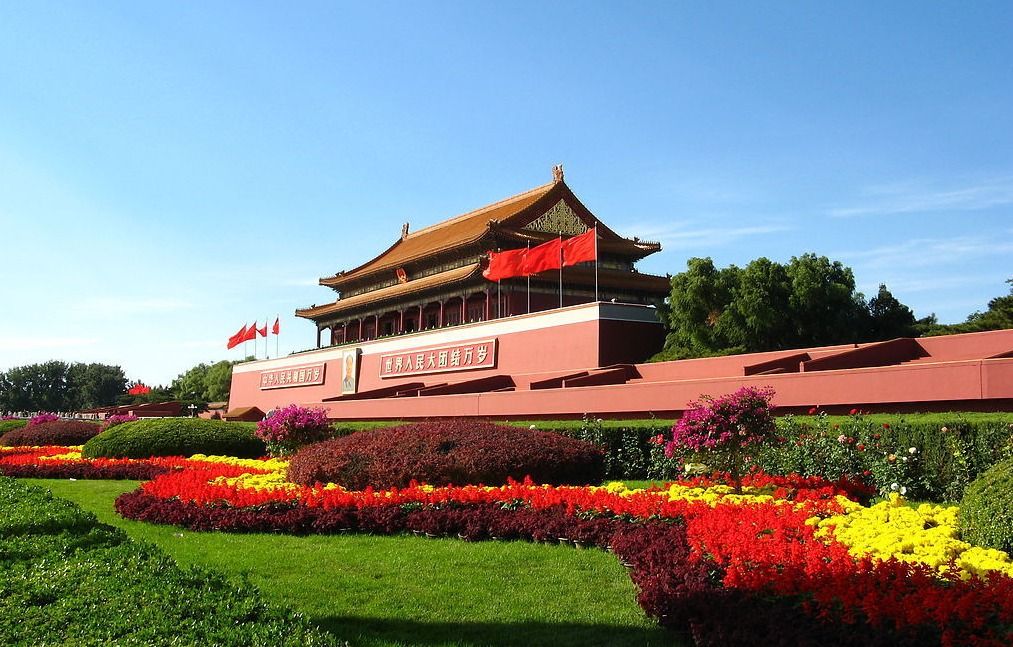
北京,简称“京”,是中华人民共和国的首都、直辖市、国家中心城市、超大城市、国际大都市,全国政治中心、文化中心、国际交往中心、科技创新中心,是中国共产党中央委员会、中华人民共和国中央人民政府、全国人民代表大会、中国人民政治协商会议全国委员会、中华人民共和国中央军事委员会所在地,也是中部战区司令部驻地。
北京位于华北平原北部,背靠燕山,毗邻天津市和河北省。北京的气候为典型的北温带半湿润大陆性季风气候。
北京是首批国家历史文化名城和世界上拥有世界文化遗产数最多的城市,三千多年的历史孕育了故宫、天坛、八达岭长城、颐和园等众多名胜古迹。早在七十万年前,北京周口店地区就出现了原始人群部落“北京人”。公元前1045年,北京成为蓟、燕等诸侯国的都城。公元938年以来,北京先后成为辽陪都、金中都、元大都、明、清国都。1949年10月1日成为中华人民共和国首都。
北京被全球权威机构GaWC评为世界一线城市 。联合国报告指出,北京人类发展指数居中国城市第二位 。2017年,北京人均可支配收入达到57230元,社会消费品零售总额11575.4亿元 。北京住户存款总额和人均住户存款均居全国第一 。2017年,北京高新技术企业达到20183家。 福布斯2017年“中国大陆最佳商业城市排行榜”排第3位。
2015年7月31日,国际奥委会主席巴赫宣布北京携手张家口获得2022年冬季奥林匹克运动会的举办权。北京由此成为全球首个既举办过夏季奥运会又将举办冬季奥运会的城市。
北京是一座有着三千多年历史的古都,在不同的朝代有着不同的称谓,大致算起来有二十多个别称。
燕都,据史书记载,公元前1122年,周武王灭商以后,在燕封召公。燕都因古时为燕国都城而得名。战国七雄中有燕国,据说是因临近燕山而得国名,其国都称为“燕都”。
幽州,远古时代的九州之一。幽州之名,最早见于《尚书·舜典》:“燕曰幽州。”两汉、魏、晋、唐代都曾设置过幽州,所治均在今天的北京一带。
京城,京城泛指国都,北京成为国都后,也多将其称为京城。
南京,辽太宗会同元年(938年),将原来的幽州升为幽都府,建号南京,又称燕京,作为辽的陪都。当时辽的首都在上京。
大都,元代以金的离宫今北海公园为中心重建新城,元世祖至元九年(1272年)改称大都,俗称元大都。
北平,明代洪武元年(1368年),朱元璋灭掉元朝后,为了记载平定北方的功绩,将元大都改称北平。
北京,明永乐元年(1403年),明成祖朱棣永乐皇帝取得皇位后,将他做燕王时的封地北平府改为顺天府,建北京城,并准备迁都城于此,这是正式命名为北京的开始,至今已有600余年的历史。
京师,明成祖于永乐十八年(1420年)迁都北京,改称京师,直至清代。
京兆,民国二年(1913年)废顺天府,翌年置京兆地方,直隶中央,其范围包括今天的北京大部分地区,民国十七年(1928年)废京兆地方,改北京为北平。
Peking (chinesisch 北京, Pinyin Běijīng, W.-G. Pei-ching auch Beijing,  [pei˨˩tɕiŋ˥˥], deutsch historisch Pekingen[2]) ist die Hauptstadt der Volksrepublik China. Der Name bedeutet Nördliche Hauptstadt (vgl. Nanjing für Südliche Hauptstadt). Peking hat eine über dreitausendjährige Geschichte und ist heute eine regierungsunmittelbare Stadt, das heißt, sie ist direkt der Zentralregierung unterstellt und damit Provinzen, autonomen Gebieten und Sonderverwaltungszonen gleichgestellt.
[pei˨˩tɕiŋ˥˥], deutsch historisch Pekingen[2]) ist die Hauptstadt der Volksrepublik China. Der Name bedeutet Nördliche Hauptstadt (vgl. Nanjing für Südliche Hauptstadt). Peking hat eine über dreitausendjährige Geschichte und ist heute eine regierungsunmittelbare Stadt, das heißt, sie ist direkt der Zentralregierung unterstellt und damit Provinzen, autonomen Gebieten und Sonderverwaltungszonen gleichgestellt.
Das gesamte 16.807 Quadratkilometer große (etwas größer als Schleswig-Holstein) Verwaltungsgebiet Pekings hat 21,5 Millionen Einwohner (Stand: März 2016).[3] Es stellt kein zusammenhängendes Stadtgebiet dar, mit seiner dominierenden ländlichen Siedlungsstruktur ist es eher mit einer Provinz vergleichbar.[4] Von der Gesamtbevölkerung sind 11,8 Millionen registrierte Bewohner mit ständigem Wohnsitz (戶口 / 户口, hùkǒu) und 7,7 Millionen temporäre Einwohner (流動人口 / 流动人口, liúdòng rénkǒu) mit befristeter Aufenthaltsgenehmigung (暫住證 / 暂住证, zànzhùzhèng).[5] Wird die Kernstadt (hohe Bebauungsdichte und geschlossene Ortsform) als Grundlage genommen, leben in Peking 7,7 Millionen Menschen mit Hauptwohnsitz (2007).[6] Der Ballungsraum (einschließlich Vororte) hat 11,8 Millionen Einwohner (2007).[7] Ab 2017 soll die Metropole Kern einer Megalopolis von 130 Millionen Einwohnern namens Jing-Jin-Ji werden.
Peking stellt als Hauptstadt das politische Zentrum Chinas dar. Aufgrund der langen Geschichte beherbergt Peking ein bedeutendes Kulturerbe. Dies umfasst die traditionellen Wohnviertel mit Hutongs, den Tian’anmen-Platz (chinesisch Platz am Tor des Himmlischen Friedens), die 1987 von der UNESCO zum Weltkulturerbe erklärte Verbotene Stadt, den neuen und alten Sommerpalast und verschiedene Tempel, wie z. B. den Himmelstempel, den Lamatempel und den Konfuziustempel.(2012)
北京市(ペキンし、中国語: 北京市、拼音: Běijīng)は、中華人民共和国の首都である。
行政区画上は直轄市であり、中国の華北の中央に位置する。人口は2152万(2014年)であり、中国では上海に次ぐ第二の都市。世界有数のメガシティであり、極めて高い影響力を有する世界都市でもある。古くは大都・燕京・北平とも呼ばれた。
春秋戦国時代には燕の首都で薊(けい)と称された。周の国都洛陽からは遠く離れ、常に北方の匈奴などの遊牧民族の侵入による被害を受ける辺境であった。秦漢代には北平(ほくへい)と称されるが、満州開発が進み、高句麗など周辺国の勢力が強大となると、戦略上、また交易上の重要な拠点として重視されるようになった。北京市に隣接する河北省涿郡(たくぐん)は三国志の英雄劉備の故郷で知られるとともに隋の煬帝が築いた大運河の北の起点とされている。
唐末五代の騒乱期、内モンゴルから南下してきた遼朝は、後晋に対し軍事支援を行った代償として北京地方を含む燕雲十六州を割譲された。遼はこの都市を副都の一つ南京と定めた。その後金朝が遼を滅ぼし支配権を獲得すると、金は北京に都城を定め中都とした。更にモンゴル帝国(元朝)が金を滅ぼすと大都として元朝の都城となり、カラコルムに代わってモンゴル帝国の中心となった。
朱元璋が元を北方に駆逐し明朝が成立すると、名称は北平に戻され、都城は南京に定められた。しかし、燕王に封じられ北京を拠点とした朱棣(後の永楽帝)は、1402年に建文帝に対し軍事攻撃を行い政権を奪取。皇帝に即位した後北京遷都を実行し地名を北京に改めた。辛亥革命後は中華民国北洋政府は北京を首都と定めたが、南京を首都と定めた蒋介石を中心とする国民政府は、「政府直轄地域」を意味する直隷省を1928年6月15日に河北省へ、北の首都を意味する北京を北平(ほくへい、ベイピンBěipíng)へと、それぞれ改称した。1937年から1945年まで続いた日本軍占領期は北京の名称が用いられ(公式には1940年に改名)、日本の敗戦によって再び北平に改称された。
1949年10月1日の中華人民共和国成立により新中国の首都とされた北京(北平)は再び北京と改称され現在に至っている。しかし、中華人民共和国の存在を承認せず、南京を公式な首都として大陸地区への統治権を主張する中華民国(台湾)では、現在でも公式名称として「北平」の名称が用いられている。
Beijing (/beɪˈdʒɪŋ/;[10] Mandarin: [pèi.tɕíŋ] ( listen)), formerly romanized as Peking,[11] is the capital of the People's Republic of China, the world's third most populous city proper, and most populous capital city. The city, located in northern China, is governed as a municipality under the direct administration of central government with 16 urban, suburban, and rural districts.[12] Beijing Municipality is surrounded by Hebei Province with the exception of neighboring Tianjin Municipality to the southeast; together the three divisions form the Jingjinji metropolitan region and the national capital region of China.[13]
listen)), formerly romanized as Peking,[11] is the capital of the People's Republic of China, the world's third most populous city proper, and most populous capital city. The city, located in northern China, is governed as a municipality under the direct administration of central government with 16 urban, suburban, and rural districts.[12] Beijing Municipality is surrounded by Hebei Province with the exception of neighboring Tianjin Municipality to the southeast; together the three divisions form the Jingjinji metropolitan region and the national capital region of China.[13]
Beijing is an important capital and global power city, and one of the world's leading centers for politics, economy and business, finance, education, culture, innovation and technology, architecture, language, and diplomacy. A megacity, Beijing is the second largest Chinese city by urban population after Shanghai and is the nation's political, cultural, and educational center.[14] It is home to the headquarters of most of China's largest state-owned companies and houses the largest number of Fortune Global 500 companies in the world.[15] It is also a major hub for the national highway, expressway, railway, and high-speed rail networks. The Beijing Capital International Airport has been the second busiest in the world by passenger traffic since 2010,[16] and, as of 2016, the city's subway network is the busiest and second longest in the world.
Combining both modern and traditional architecture, Beijing is one of the oldest cities in the world, with a rich history dating back three millennia. As the last of the Four Great Ancient Capitals of China, Beijing has been the political center of the country for most of the past eight centuries,[17] and was the largest city in the world by population for much of the second millennium A.D.[18] Encyclopædia Britannica notes that "few cities in the world have served for so long as the political headquarters and cultural center of an area as immense as China."[19] With mountains surrounding the inland city on three sides, in addition to the old inner and outer city walls, Beijing was strategically poised and developed to be the residence of the emperor and thus was the perfect location for the imperial capital. The city is renowned for its opulent palaces, temples, parks, gardens, tombs, walls and gates.[20] It has seven UNESCO World Heritage Sites – the Forbidden City, Temple of Heaven, Summer Palace, Ming Tombs, Zhoukoudian, and parts of the Great Wall and the Grand Canal – all popular locations for tourism.[21] Siheyuans, the city's traditional housing style, and hutongs, the narrow alleys between siheyuans, are major tourist attractions and are common in urban Beijing.
Pékin2 (en chinois : 北京 ; pinyin : běijīng ; API : [pe˨˩˦i.tɕi˥ŋ] Écouter la prononciation en mandarin, littéralement « capitale du nord »), également appelée Beijing, est la capitale de la République populaire de Chine. Située dans le nord du pays, la municipalité de Pékin (北京市, abrégé en 北京), d'une superficie de 16 800 km2, borde la province du Hebei ainsi que la municipalité de Tianjin. Pékin est considérée comme le centre politique et culturel de la Chine, tandis que Hong Kong et Shanghai dominent au niveau économique.
D'abord ville périphérique de l'empire chinois sous les Han et les Tang, elle prend de l'importance lorsque les Jurchen, qui fondent la dynastie Jin, la choisissent comme leur capitale principale en 1153. Le prince mongol Kubilai Khan en fait de même sous le nom de Dadu (« grande métropole »), enfin les Ming y transfèrent leur administration en 1421, parachevant le choix de Pékin comme capitale de la Chine. Située à proximité de la Grande Muraille, Pékin abrite des monuments célèbres comme la Cité interdite et le Temple du ciel, qui sont inscrits au patrimoine mondial. De nombreuses réalisations architecturales et structurelles ont modifié la ville à l'occasion des Jeux olympiques d'été dont elle a été l'hôte en 2008. Beijing a été choisie par le CIO pour organiser les Jeux olympiques d'hiver de 2022 et sera la première ville à avoir accueilli les deux éditions de l'évènement sportif international.
Avec 21,15 millions d'habitants en 2013, Pékin est la deuxième ville la plus peuplée de Chine après Shanghai. La zone urbaine compte quant à elle 18 millions d'habitants. Le parler pékinois forme la base du mandarin standard. D'un point de vue économique, Pékin est la troisième ville de Chine par le PIB total derrière Shanghai et Hong Kong. Elle connaît une croissance économique très rapide, nettement plus de 10 % par an dans les années 2000. Un nouveau Central business district (CBD) est en construction.
Pechino (AFI: /peˈkino/[1]; in cinese 北京S, BěijīngP, letteralmente "capitale del nord", pronuncia in mandarino[?·info]) è la capitale della Cina e della municipalità omonima.
L'intera municipalità ha dimensioni pari a poco più della metà del Belgio avendone però quasi il doppio degli abitanti (21.516.000[senza fonte]). Pechino è la seconda città più popolata della Cina dopo Shanghai, la capitale di Stato più popolata al mondo, e la seconda città del mondo per popolazione. Confina esclusivamente con la provincia dell'Hebei e a sud-est con la municipalità di Tientsin.
Pekín, Pequín o Beijing (chino simplificado y tradicional: 北京, pinyin: Běijīng, Wade-Giles: Pei-ching, pronunciado: [pèi.tɕíŋ](![]() escuchar), literalmente «capital del Norte») es uno de los cuatro municipios que, junto con las veintidós provincias, cinco regiones autónomas y dos regiones administrativas especiales, conforman la República Popular China. Además Pekín es la capital del país y una de las ciudades más pobladas del mundo con 21 150 000 personas en 2013.2
escuchar), literalmente «capital del Norte») es uno de los cuatro municipios que, junto con las veintidós provincias, cinco regiones autónomas y dos regiones administrativas especiales, conforman la República Popular China. Además Pekín es la capital del país y una de las ciudades más pobladas del mundo con 21 150 000 personas en 2013.2
Situada en la periferia de la antigua civilización china, Pekín se convirtió en el baluarte de las potencias extranjeras que ocuparon China del Norte entre los siglos X y XII. La dinastía Liao estableció aquí su capital meridional, la más acreditada de las cinco del reino. La dinastía Jin, la siguiente dinastía "bárbara" emprendió un amplio proyecto urbanístico a imagen de la capital de los Song septentrionales, Kaifeng. En 1215 los mongoles arrasaron la ciudad, pero 50 años después Kublai Kan decidió edificar en ella la nueva capital.
En la zona centro-sur del trazado hipodámico se hallaba la colosal villa imperial que contenía el complejo de palacios imperiales. El emperador Yongle, el tercer Ming, decidió trasladar la capitalidad a Pekín. Las murallas del lado septentrional fueron trasladadas más hacia el Sur para que el complejo palaciego imperial, la llamada Ciudad Prohibida, quedase exactamente en el centro del plano. Así la estructura del nuevo Pekín representa la cima del urbanismo tradicional chino, basado en la organización introducida por los mongoles así como en la estructura de los palacios imperiales de Kaifeng y Nankín además de tomar en consideración las normas de la geomancia china (風水).
Pekín es uno de los cuatro municipios de China que poseen un estatus provincial y están bajo el control directo del gobierno central. Pekín ha sido municipalidad desde la creación de la República Popular China. Es una de las ciudades más pobladas de China, tan sólo superada por Shanghái en cuanto a población. Es considerada el corazón cultural, político y social de China.
Пеки́н (кит. 北京, пиньинь: Běijīng, палл.: Бэйцзин, буквально: «Северная столица») — столица и один из городов центрального подчинения Китайской Народной Республики. Пекин с трёх сторон окружён провинцией Хэбэй и граничит с Тяньцзинем на юго-востоке.
Это крупнейший железно- и автодорожный узел и один из основных авиаузлов страны. Кроме того, Пекин является политическим, образовательным и культурным центром КНР, в то время как главными экономическими центрами считаются Шанхай и Гонконг. Вместе с тем, в последнее время всё больше берёт на себя роль локомотива предпринимательской деятельности и основного поля для создания инновационных предприятий.
Входит в число четырёх древних столиц Китая. В 2008 году в городе прошли Летние Олимпийские игры. В 2022 году в городе пройдут Зимние Олимпийские игры.

贝鲁特(阿拉伯语:بيروت,罗马化:Bayrūt;亚美尼亚语:Պէյրութ,罗马化:Peyrut[2];希腊语:Βηρυτός,罗马化:Bērytós;拉丁语:Berytus;希伯来语:בְּאֵרוֹת,罗马化:Be’erot;阿拉姆语:Birot בירות;英语:Beirut;法语:Beyrouth;土耳其语:Beyrut)是黎巴嫩的首都,位于贝鲁特省的地中海沿岸,是该国最大的海港, 也有着东方小巴黎的称呼。因为最近一直没有进行人口普查,故其具体人口未知。2007年时估计有100万到200万之间。该地名首次出现于古埃及的阿马尔奈文书中,历史可追溯至公元前15世纪,并一直有人类居住,与邻国叙利亚的大马士革并列为世界最古老城市之一。
贝鲁特不仅是黎巴嫩政府所在地,同时对黎巴嫩经济也有着不可忽视的影响。贝鲁特中央区、哈姆拉街、阿什拉斐叶区等地有众多公司与银行。此外还有许多著名出版社、剧院,夜生活丰富,因此也成为了区域内的文化中心,亦有中东巴黎的美称。20世纪末期因黎巴嫩内战被毁,经历了大重建。[3][4][5]
依照全球化及世界城市研究网络(GaWC)所公布之《世界级城市》名单中,安曼属于Beta级别的国际都市[6]2009年被《纽约时报》评为最佳旅游城市,[7]同年孤独星球将其评为全球最具活力的城市之一。[8]根据美世咨询2010年的研究,贝鲁特是中东消费水平第四高的城市,在中上等收入国家中排第15位。[9]2011年,万事达指出贝鲁特是中东和非洲旅游消费第二高的城市。[10]
贝鲁特举办过许多场国际性足球赛和1957和1997年的泛阿拉伯运动会。近代,由于黎巴嫩内战和贝鲁特港的大规模爆炸对城市造成了严重破坏。使得贝鲁特的文化景观经历重大的重建。[11][12][13]
Beirut ([ˈbeɪ̯ruːt],[1] auch [baɪ̯ˈruːt],[1] arabisch بيروت Bayrūt, mundartlich Beyrūt) ist die Hauptstadt des Libanon. Sie liegt am östlichen Mittelmeer, an der Küste der Levante, ungefähr in der Mitte von deren Nord-Süd-Ausdehnung.
Beirut ist das wirtschaftliche und kulturelle Zentrum des Libanon mit vielen Verlagen und Universitäten, unter anderen der Amerikanischen Universität Beirut (AUB) und der Université Saint-Joseph (USJ). Die Stadt wurde vor dem libanesischen Bürgerkrieg (1975–1990) oft als „Paris des Orients“[2] bezeichnet. 1982 wurde die Stadt durch israelische Luftangriffe schwer beschädigt, viele Bezirke der Stadt wurden fast vollständig zerstört. Nach Kriegsende 1990 und 2006 begann der Wiederaufbau Beiruts, seither erlebte die Stadt mehrere Modernisierungsprogramme wie die Anlage der Promenade Zaitunay Bay, die von Jachthäfen und modernen Hochhäusern umgeben ist, und der Beirut Souks, die von Apartmenthäusern, Malls und Modegeschäften geprägt ist. Aufgrund der Bemühungen einer Modernisierung entwickelte sich in Beirut über die Jahre hinweg ein pulsierendes Nachtleben und eine Skyline, die diese Stadt mittlerweile prägt.
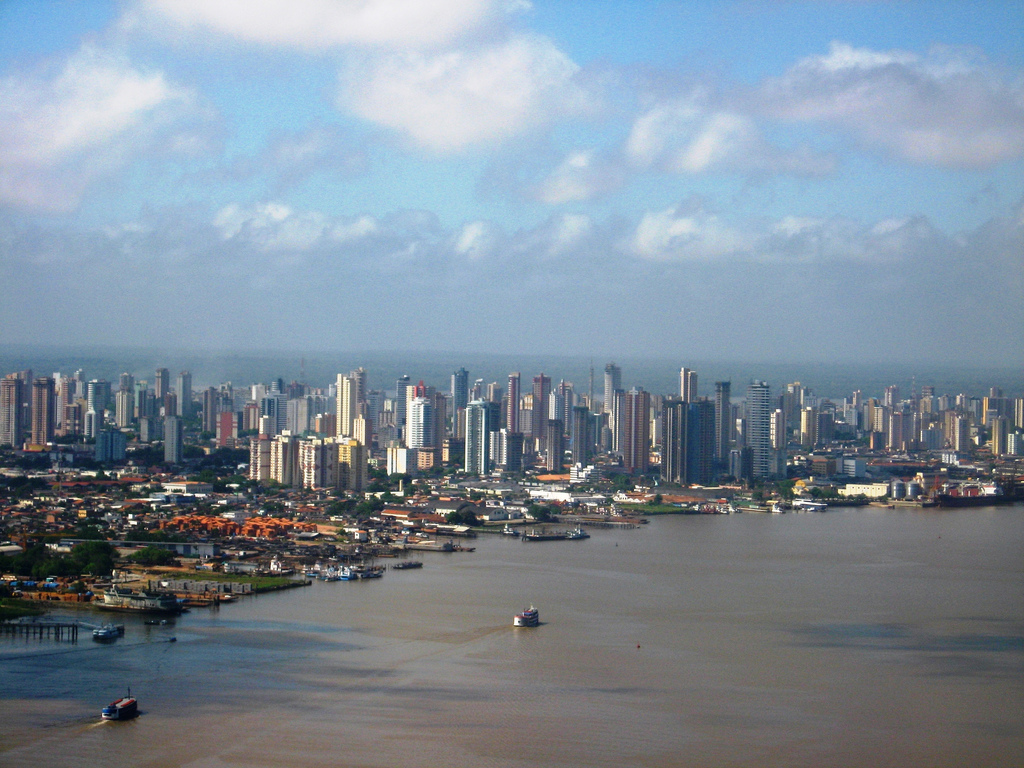


贝尔福(法語:Belfort,法语:[bɛlfɔʁ] ( 聆聽)),法国东部城市,勃艮第-弗朗什-孔泰大区贝尔福地区省的一个市镇,是该省的省会和最大的城市,下辖贝尔福区[1],同时也是大贝尔福城市圈公共社区的中心市镇及办公驻地。贝尔福位于贝尔福地区省中部略偏西[2],其市镇面积为17.1平方公里,2019年1月1日时的人口数量为46443人,在法国城市中排名第134位。
聆聽)),法国东部城市,勃艮第-弗朗什-孔泰大区贝尔福地区省的一个市镇,是该省的省会和最大的城市,下辖贝尔福区[1],同时也是大贝尔福城市圈公共社区的中心市镇及办公驻地。贝尔福位于贝尔福地区省中部略偏西[2],其市镇面积为17.1平方公里,2019年1月1日时的人口数量为46443人,在法国城市中排名第134位。
贝尔福因普法战争期间的贝尔福战役而闻名。在1870年11月到1871年2月间,该城被普鲁士军队围困长达104天而不破,致使贝尔福在普法战争后没有被并入德意志帝国版图。为纪念这一英勇的壮举,著名雕刻家巴托尔迪创作了一座长22米,高11米的雄狮雕塑,被称为“贝尔福雄狮”。现在它已经成为贝尔福的标志。
贝尔福也是一个区域性的工商业中心城市和交通枢纽,当地设有一所工程师学校,世界电气制造商阿尔斯通在贝尔福设有大型工厂。
Belfort (deutsch veraltet Beffert, Beffort oder Befort[1]) ist eine Industrie- und Garnisonsstadt in Ostfrankreich etwa 50 Kilometer südwestlich von Mülhausen.
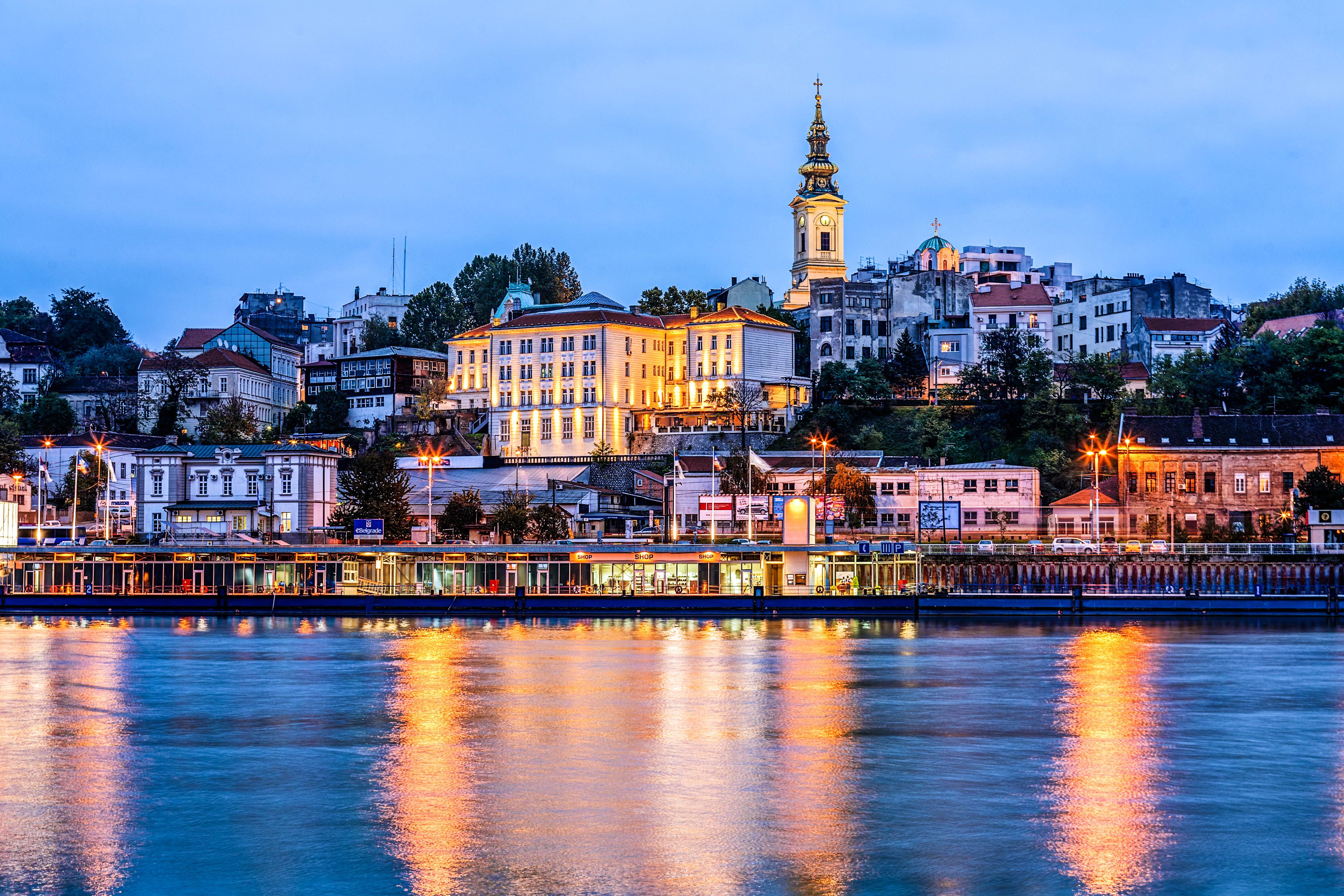
贝尔格莱德(塞尔维亚语:Београд,意为“白城”),欧洲国家塞尔维亚首都和最大城市,以及当年南斯拉夫联邦时期的总首都。贝尔格莱德市位于塞尔维亚北部萨瓦河和多瑙河汇合处,此处也是潘诺尼亚平原和巴尔干半岛的相遇处。贝尔格莱德市内共有人口123万,整个行政区范围内的人口达到近170万,是原南斯拉夫地区最大的城市。
贝尔格莱德地区最早的人类居住出现在公元前4800年温查文明时期。凯尔特人于公元前3世纪征服了这一地区,并将其命名为Singidunum,[5] 后被罗马帝国占领[6] [7]。
公元520年,斯拉夫人占领了这一地区。此后它在拜占庭帝国、法兰克王国、保加利亚王国和奥匈帝国之间几次易手。城市的斯拉夫语名字Beligrad(字面意思为“白城”)第一次被提及是在878年。1284年,贝尔格莱德第一次成为塞尔维亚斯雷姆王国的首都。此后,它还先后成为塞尔维亚(1404年-1918年、2006年-)、南斯拉夫(1918年-2003年)首都以及塞尔维亚和黑山的行政、立法首都(2003年-2006年)[8]。
贝尔格莱德是塞尔维亚唯一的直辖市[9],被分为17个自治市,每一个都拥有自己的地方委员会[10]。贝尔格莱德占塞尔维亚总面积的3.6%,约21%(不包括科索沃自治省)的塞尔维亚人居住在该市[11]。贝尔格莱德是塞尔维亚的经济、文化、教育和科技中心。
Belgrad (serbisch Београд/Beograd [], übersetzt „weiße Stadt“, daher der altertümliche Name Griechisch Weißenburg), ist die Hauptstadt der Republik Serbien. Die Stadt gliedert sich in zehn Stadtgemeinden und sieben Vorstadtgemeinden. Die Kernstadt besitzt eine Fläche von 359,96 km², die umgebenden Vorstadtgebiete 2862,72 km², wobei die Fläche einiger Gemeinden teilweise zur Kernstadt und teilweise zur Vorstadt gehört. Zusammen bilden sie den Okrug Beograd mit 1,71 Millionen Einwohnern (Zensus 2011) und gehört somit zu den größten Metropolregionen in Südosteuropa. Mit 1.233.796 Einwohnern[1] ist sie außerdem die serbische Primatstadt.
Mit seinen Universitäten, Hochschulen und wissenschaftlichen Einrichtungen stellt Belgrad das überragende Bildungszentrum und mit zahlreichen Verlagen, Rundfunk- und Fernsehanstalten sowie Tages- und Monatszeitungen auch das dominierende Medienzentrum des Landes. Belgrad ist Sitz der Serbisch-Orthodoxen Kirche und Residenz des Serbischen Patriarchen. Das größte christliche Gotteshaus der Balkanhalbinsel, die Kathedrale Hl. Sava, steht in Belgrad.
Dank der Lage an der Mündung der Save in die Donau am südöstlichen Rand der Pannonischen Tiefebene und an der Nordgrenze der Balkanhalbinsel ist die Stadt Dreh- und Angelpunkt für den Verkehr zwischen Mittel- und Südosteuropa. In der regionalen Vernetzung der Verkehrswege ist es Sitz des Sekretariats für Transport der Länder im Westbalkan.[2][3] Daher wird Belgrad oft auch als Tor zum Balkan bezeichnet. Wahrzeichen Belgrads ist die in der Geschichte häufig umkämpfte, über der Save-Mündung in die Donau thronende Festung von Belgrad. In der Nähe befindet sich die historische Universitäts-Sternwarte und jenseits des Flusses (Novi Beograd) das 1977–1979 erbaute Sava Centar, das größte Kongresszentrum aller Balkanländer.
Belgrad war erstmals zu Anfang des 15. Jahrhunderts Hauptstadt der mittelalterlichen Serbischen Herrscherdynastien und ist seit dem 19. Jahrhundert Residenzstadt Serbiens. Im 20. Jahrhundert war es die Hauptstadt des Königreichs Jugoslawien und des sozialistischen Jugoslawien. Durch die jugoslawische Ablehnung sowjetischer Hegemonie und Stalinismus und als Versammlungsort der Blockfreien war Belgrad in der Zeit des Kalten Krieges ein bedeutendes politisches Zentrum.
Belgrade (/ˈbɛlɡreɪd/ BEL-grayd; Serbian: Beograd / Београд, meaning "white city", Serbian pronunciation: [beǒɡrad] (![]() listen); names in other languages) is the capital and largest city of Serbia. It is located at the confluence of the Sava and Danube rivers, where the Pannonian Plain meets the Balkans.[7] The urban area of the City of Belgrade has a population of 1.23 million, while nearly 1.7 million people live within its administrative limits.[5]
listen); names in other languages) is the capital and largest city of Serbia. It is located at the confluence of the Sava and Danube rivers, where the Pannonian Plain meets the Balkans.[7] The urban area of the City of Belgrade has a population of 1.23 million, while nearly 1.7 million people live within its administrative limits.[5]
One of the most important prehistoric cultures of Europe, the Vinča culture, evolved within the Belgrade area in the 6th millennium BC. In antiquity, Thraco-Dacians inhabited the region and after 279 BC Celts conquered the city, naming it Singidūn.[8] It was conquered by the Romans during the reign of Augustus, and awarded city rights in the mid-2nd century.[9] It was settled by the Slavs in the 520s, and changed hands several times between the Byzantine Empire, Frankish Empire, Bulgarian Empire and Kingdom of Hungary before it became the capital of Serbian king Stephen Dragutin (1282–1316). In 1521, Belgrade was conquered by the Ottoman Empire and became the seat of the Sanjak of Smederevo.[10] It frequently passed from Ottoman to Habsburg rule, which saw the destruction of most of the city during the Austro-Ottoman wars. Belgrade was again named the capital of Serbia in 1841. Northern Belgrade remained the southernmost Habsburg post until 1918, when the city was reunited. As a strategic location, the city was battled over in 115 wars and razed 44 times.[11] Belgrade was the capital of Yugoslavia from its creation in 1918.
Belgrade has a special administrative status within Serbia[12] and it is one of five statistical regions of Serbia. Its metropolitan territory is divided into 17 municipalities, each with its own local council.[13] The city of Belgrade covers 3.6% of Serbia's territory, and around 24% of the country's population lives within its administrative limits.[5] It is classified as a Beta-Global City.[14]
Belgrade (en serbe cyrillique : Београд ; en serbe latin : Beograd) est la capitale et la plus grande ville de Serbie. Au recensement de 2011, la ville intra muros comptait 1 233 796 habitants et, avec le district dont elle est le centre, appelé Ville de Belgrade (Град Београд/Grad Beograd), 1 659 440 habitants3.
Belgrade est l'une des plus anciennes cités d'Europe, avec une histoire qui s’étend sur plus de 7 000 ans. Selon les historiens, on évalue la destruction de la ville entre 28 et 33 fois, sa position stratégique en Europe étant son bonheur et son malheur, d'où les vers du XVe siècle de Constantin le philosophe, « Pleure ville blanche, le noir de tes deuils »4. Les premières traces de présence humaine dans la région remontent à la Préhistoire et à la culture de Vinča. Historiquement, Belgrade est l’antique cité de Singidunum, colonie romaine située dans la province de Mésie. Le nom slave Beograd apparaît pour la première fois le 16 avril 878, dans une épître envoyée par le pape Jean VIII au prince Boris Ier de Bulgarie. Il a pour signification la « ville blanche ». Au fil de son histoire mouvementée, Belgrade a été conquise par 40 armées : elle a été romaine qui l'a surnommé « La colline aux méditations »5, byzantine, hongroise, serbe, ottomane puis capitale de la Serbie officiellement indépendante de la Sublime Porte en 1878.
Aujourd'hui, Belgrade dispose d'un statut qui la dote d'une assemblée et d'un gouvernement particuliers, à l'instar des districts de Serbie6. Sa zone métropolitaine, appelée « district de Belgrade » ou « ville de Belgrade », est divisée en 17 municipalités qui possèdent toutes leur propre conseil local7. Le district de Belgrade couvre ainsi 3,6 % du territoire de la Serbie et abrite 21 % de la population du pays (hors Kosovo). Belgrade est le centre économique de la Serbie, mais aussi la capitale de la culture serbe et celui de l'éducation et des sciences du pays.
Belgrado (AFI: /belˈɡrado/[2][3]; in serbo Бeoгpaд, Beograd?) è la capitale della Serbia e, fino al 1992, della Jugoslavia.
Si trova nell'ex provincia della Serbia centrale, nel punto di confluenza tra i fiumi Sava e Danubio, dove il territorio della Penisola Balcanica incontra la Pannonia. È una delle città più antiche d'Europa.
Con una popolazione di 1.233.796 abitanti, quella di Belgrado è l'area metropolitana più popolata dell'ex Jugoslavia, nonché la terza nell'Europa sudorientale, dopo quelle di Atene e di Bucarest; l'estensione superficiale dell'area urbana occupa il 3,6% del territorio della Serbia e vi risiede il 21% della popolazione serba (escludendo quella della provincia del Kosovo[4]).
La città possiede uno status che le conferisce una maggiore autonomia rispetto agli altri centri urbani della Serbia. È divisa in 17 comuni[5], dotati anch'essi di una propria autonomia organizzativa[6]. Belgrado non solo è la capitale economica e finanziaria della Serbia, ma anche culturale e scientifica, ed è uno dei principali luoghi turistici della nazione.
Nel 4800 a.C. circa, nell'area dell'attuale città di Belgrado si sviluppò la cultura Starčevo. Il medesimo territorio fu occupato alcuni secoli dopo dal popolo dei Vinča. Nel III secolo a.C. i Celti fondarono un villaggio nella zona che oggi è il centro storico di Belgrado, che fu, successivamente, conquistato dai Romani, che gli diedero il nome di Singidunum. Dal IX al XVI secolo Singidunum fu, alternativamente, sotto il potere dei Bizantini, dei Bulgari, dei Magiari e dei Serbi. Nel 1521 gli Ottomani la conquistarono. Tra il XVII secolo e il XVIII secolo Belgrado fu più volte espugnata e perduta della Casa d'Asburgo. Dopo la definitiva liberazione, nel 1841, dal dominio turco, divenne la capitale del Principato di Serbia, che, nel 1882 fu rinominato Regno di Serbia. La città fu capitale della Jugoslavia dal 1918 al 1991.
Belgrado (en serbio: Beograd; la Ciudad Blanca; escrito en alfabeto cirílico: Беoград) es la capital de la República de Serbia, además de la ciudad más grande y poblada del territorio de la antigua Yugoslavia.
Situada en la confluencia del río Sava con el Danubio y en el límite de la Llanura Panónica con la Península Balcánica, Belgrado se extiende sobre una superficie de 3222,68 km², que ocupan el 3,6 % del territorio de la República. El área metropolitana alberga a una población de 1 756 534 habitantes3 que representa el 21 % de la población serbia,45 siendo por ello también la cuarta ciudad más poblada del sureste de Europa, después de Estambul, Atenas y Bucarest.
Belgrado dispone, de acuerdo a la Constitución serbia, de un estatus especial dentro de la organización territorial del país, por el que se articula la representación ciudadana mediante un sistema de gobierno autónomo dividido en varios cuerpos6 que son la Asamblea de la Ciudad, la Alcaldía y el Consejo, siendo cada uno de los 17 municipios en los que se divide administrado por un consejo propio.7
Como capital de Serbia, Belgrado es sede de los principales organismos e instituciones de su Estado, así como de las universidades y establecimientos de investigación más importantes. Es asimismo el motor económico del país, con un sector agrario singular, y principal centro para la difusión de la cultura de Serbia. Es una de las ciudades más antiguas de Europa, con una historia que se remonta a casi 7000 años, con frecuencia convulsionada al ser escenario de enfrentamientos entre las potencias que dominaron sucesivamente la región.
Los primeros asentamientos aparecieron con la cultura prehistórica de Vinča hacia el 4800 a. C. En el siglo III a. C. se asentaron los celtas, y más tarde, los romanos fundaron la ciudad de Singidunum.89 Los primeros documentos donde consta el nombre eslavo Beligrad datan del año 878. En 1284 pasa a manos de los serbios de Sirmia, y a partir de 1403, del Despotado de Serbia. Más tarde también fue capital del Principado de Serbia, convertido en Reino de Serbia en 1882, así como de las diferentes variaciones estatales de Yugoslavia entre 1918 y 2003, lo mismo que de la Confederación de Serbia y Montenegro hasta su disolución en 2006.10

 Bellinzona?/i (italienisch [belinˈtsona], im lombardischen Dialekt der Umgebung einfach Bórgh [bork] ‹Stadt›;[5][6] deutsch heute selten Bellenz; französisch Bellinzone, früher auch Bellence; rätoromanisch
Bellinzona?/i (italienisch [belinˈtsona], im lombardischen Dialekt der Umgebung einfach Bórgh [bork] ‹Stadt›;[5][6] deutsch heute selten Bellenz; französisch Bellinzone, früher auch Bellence; rätoromanisch  Blizuna?/i, lateinisch Bilitio) ist eine politische Gemeinde im Kreis und Bezirk Bellinzona sowie Hauptort des italienischsprachigen Kantons Tessin in der Schweiz. Mit seinen rund 43'000 Einwohnern ist Bellinzona nach Lugano die zweitgrösste Stadt des Kantons.[7] Die Einwohner werden Bellenzer genannt, italienisch Bellinzonesi.
Blizuna?/i, lateinisch Bilitio) ist eine politische Gemeinde im Kreis und Bezirk Bellinzona sowie Hauptort des italienischsprachigen Kantons Tessin in der Schweiz. Mit seinen rund 43'000 Einwohnern ist Bellinzona nach Lugano die zweitgrösste Stadt des Kantons.[7] Die Einwohner werden Bellenzer genannt, italienisch Bellinzonesi.
In Bellinzona hat das Bundesstrafgericht seinen Sitz.
贝林佐纳(意大利语:Bellinzona、法语:Bellinzone、罗曼什语:Blizuna)是位于瑞士东南部的一座城市。贝林佐纳是提契诺州的首府。贝林佐纳的三城堡在2000年被登录为世界文化遗产。贝林佐纳是瑞士的第45大城市。贝林佐纳位处阿尔卑斯山脚下,东临提契诺河。


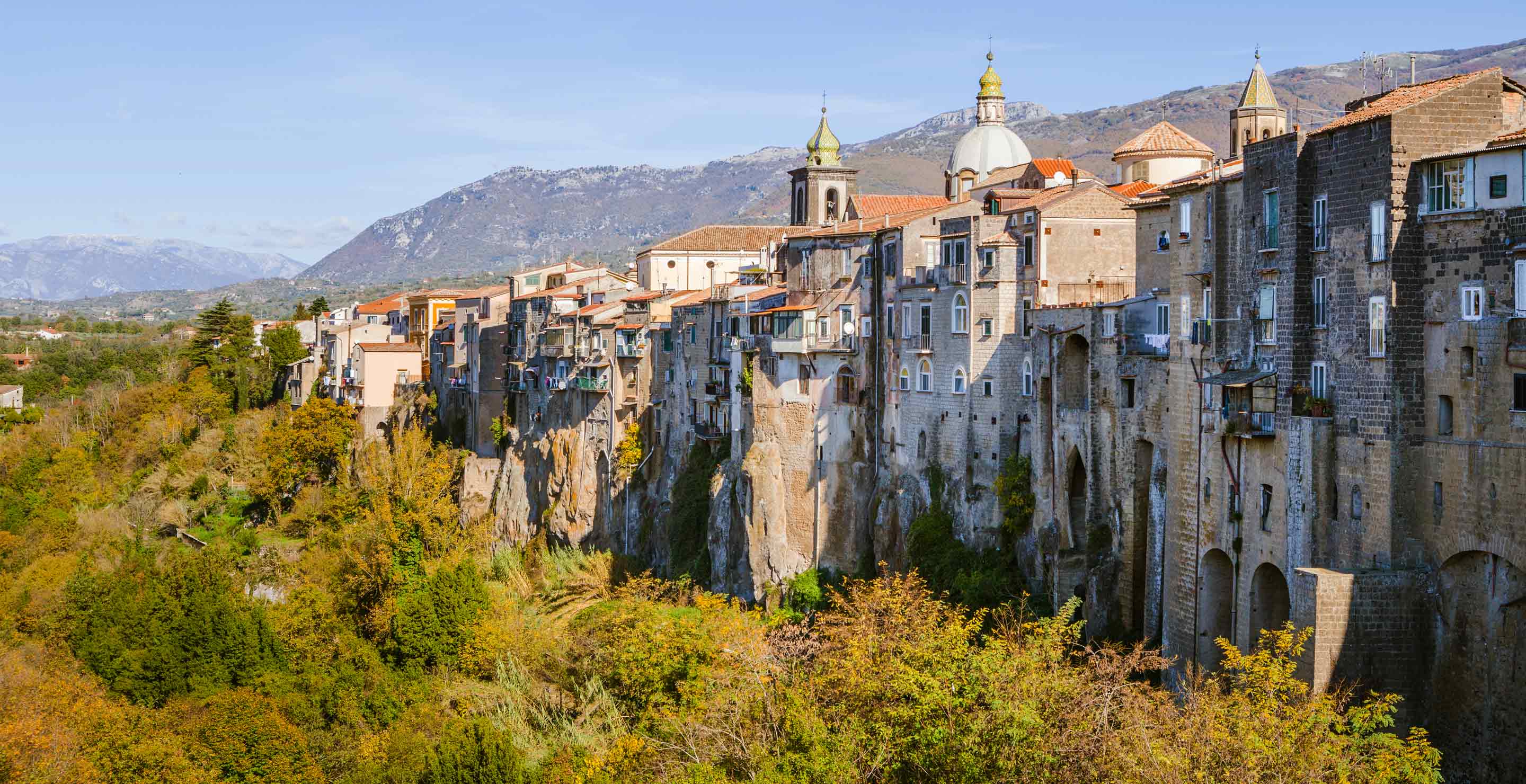
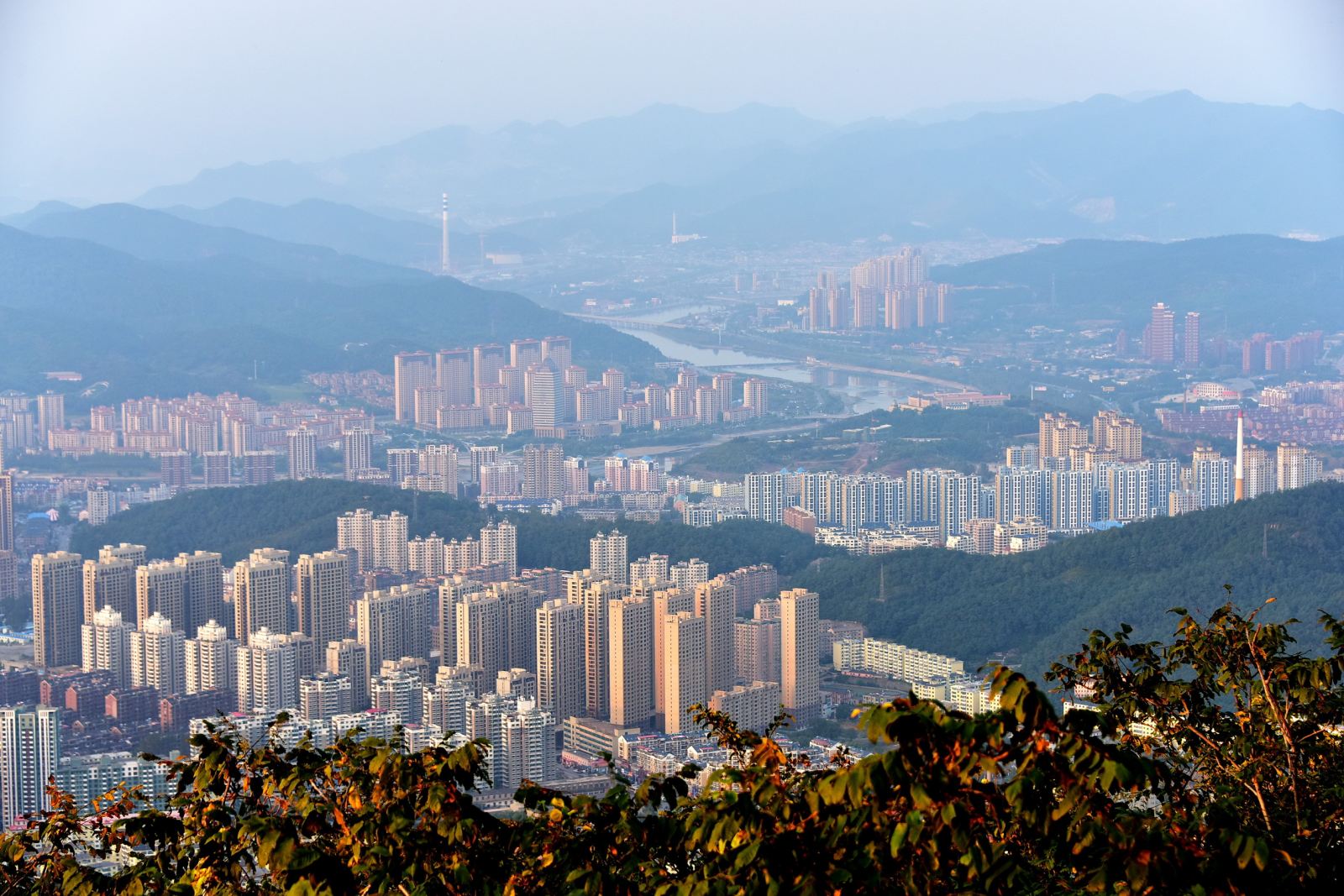

 Important port
Important port
 Bourgogne-Franche-Comté
Bourgogne-Franche-Comté
 Vacation and Travel
Vacation and Travel
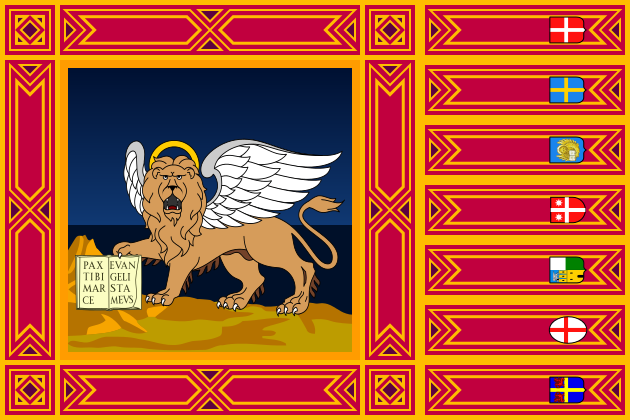 Veneto
Veneto
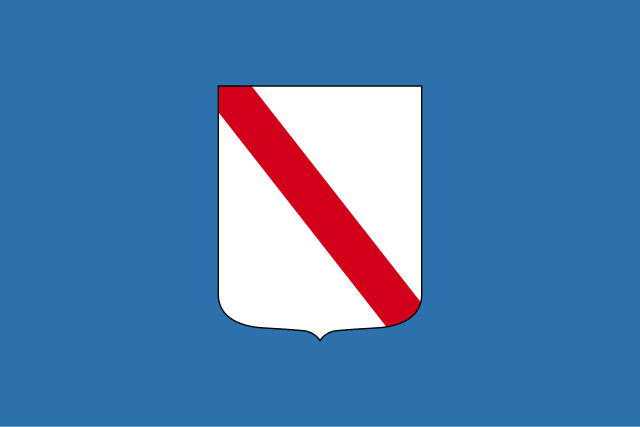 Campania
Campania
 Lombardia
Lombardia